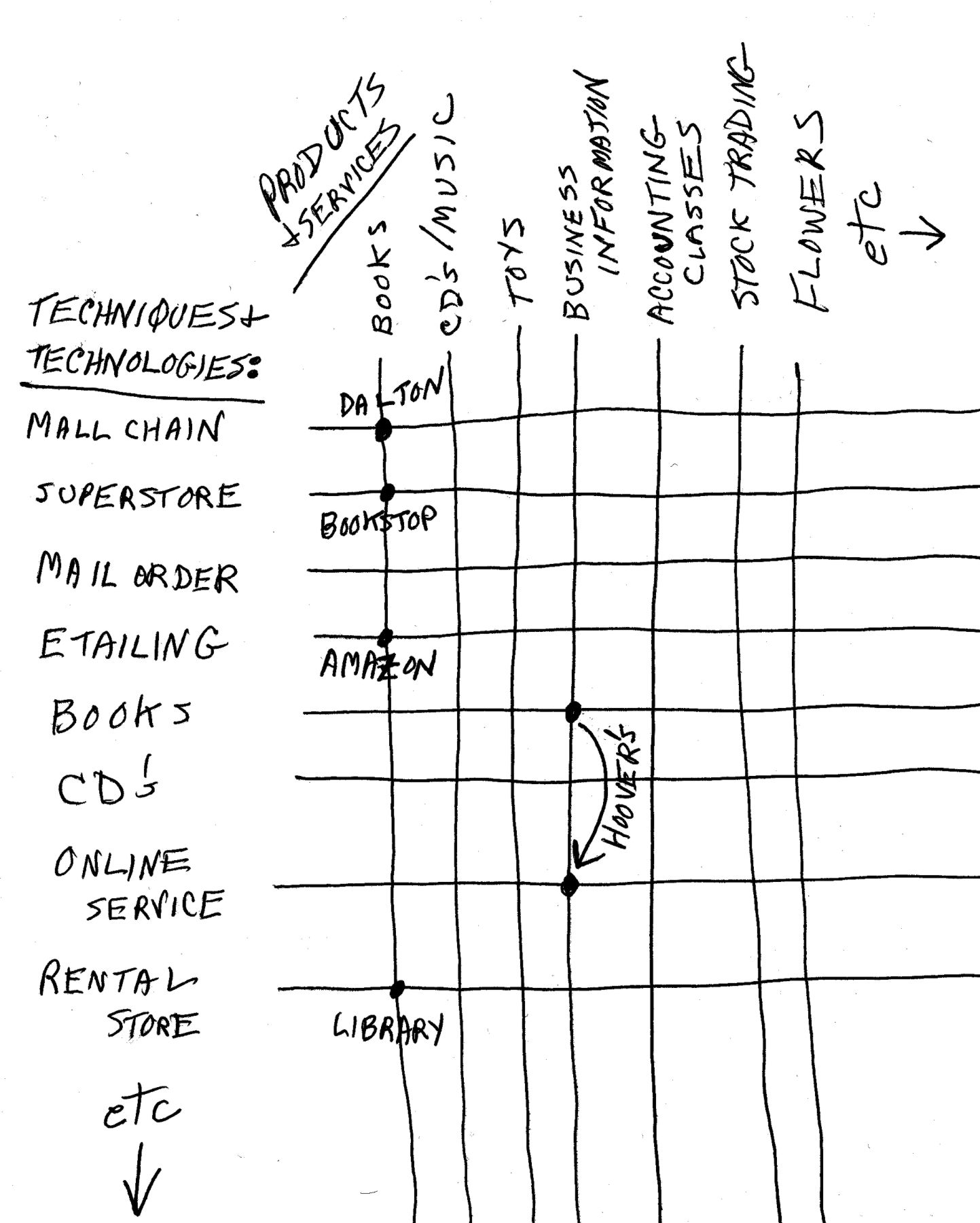|
Each Monday I post the next section of my 2001 book, which was originally called (by the publisher) Hoover’s Vision but which I have now retitled The Art of Enterprise. I have posted over half of it already; click on the “Monday” column to see all the prior sections. The entire book can be downloaded as a PDF for $10 at https://garyhoover.dpdcart.com
Many times, the best ideas come from two sources: 1. Looking for gaps in the present structure.
2. Looking for intersections.
Take looking for gaps. When I studied the bookstore business, I found that people had numerous and excellent choices when they shopped for toys, but not when they shopped for books. When I look at the consumer banking industry, I see an industry that is years behind where most US businesses stand (in terms of paying attention to the customer). I’ll come back to that industry later in the book. There are literally thousands of gaps like these, you just have to find them. (Try the curiosity tools in the early chapters of this book.)
Looking for intersections means finding ways to combine two existing ideas. Perhaps more than two ideas, but usually two is enough. For years, I kept noticing that iced tea was one of America’s most popular beverages. But, twenty years ago, you could not find iced tea in bottles or cans. I kept asking, where are the cans of iced tea? Only in the 1990s did the tea companies (Lipton and Nestea) get together with the canned drink folks (Pepsi and Coke) to create products that people want – and buy. Toys R Us was really taking the economic structure of Kmart and applying it to a new business – toys. Innovators are combining laundromats and cafes. Put together coffee and cool lifestyles – and you get Starbucks!
One way to look for intersections is to draw a grid, with one type of thing running vertically and another classification horizontally. In the grid below, I have put technologies (broadly defined, of course) on the horizontal lines and product types on the verticals. Note that I have been loose in my definitions, letting books fall on both axes. Then look at every possible crossing point and give it some thought – is there a business opportunity there?
|













